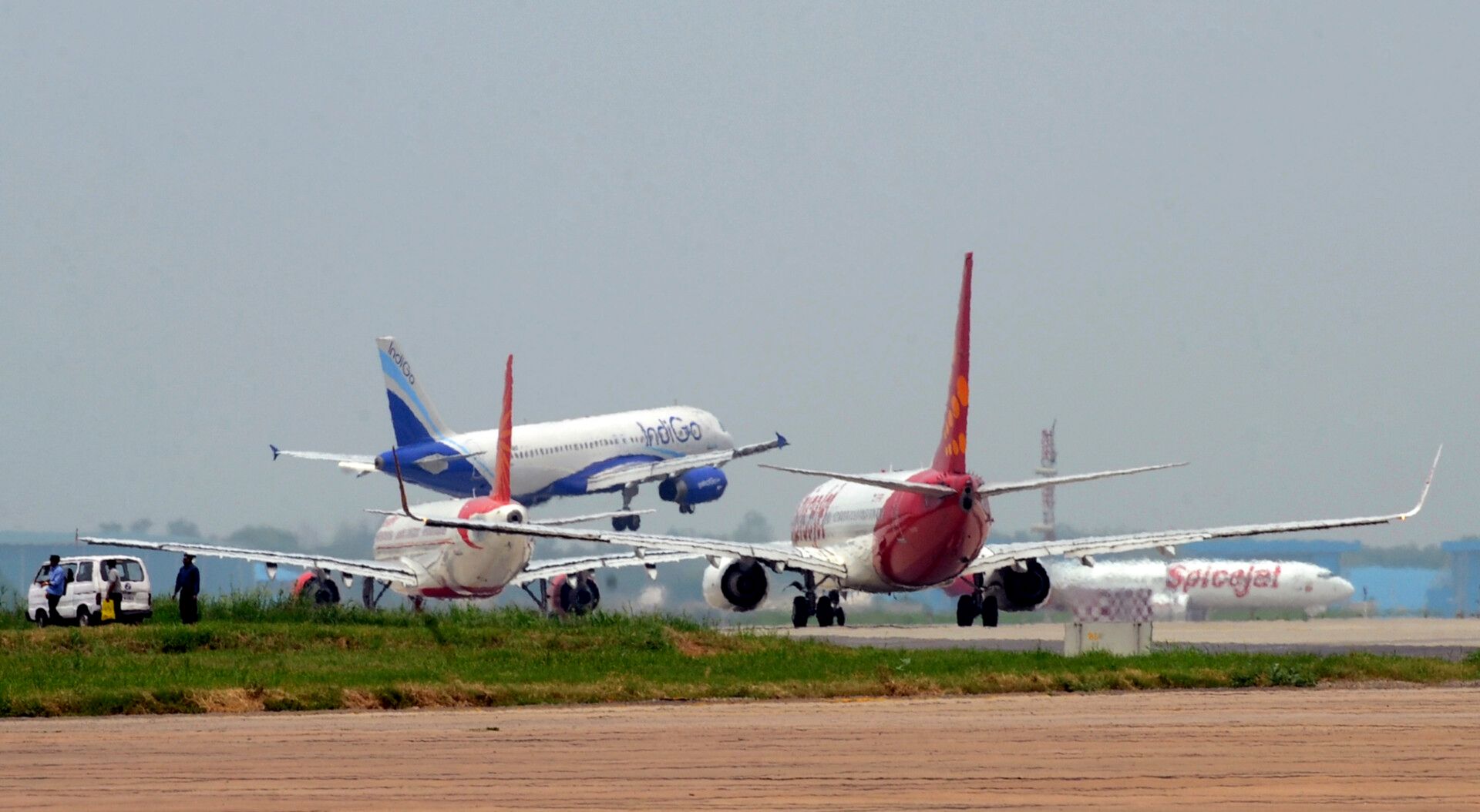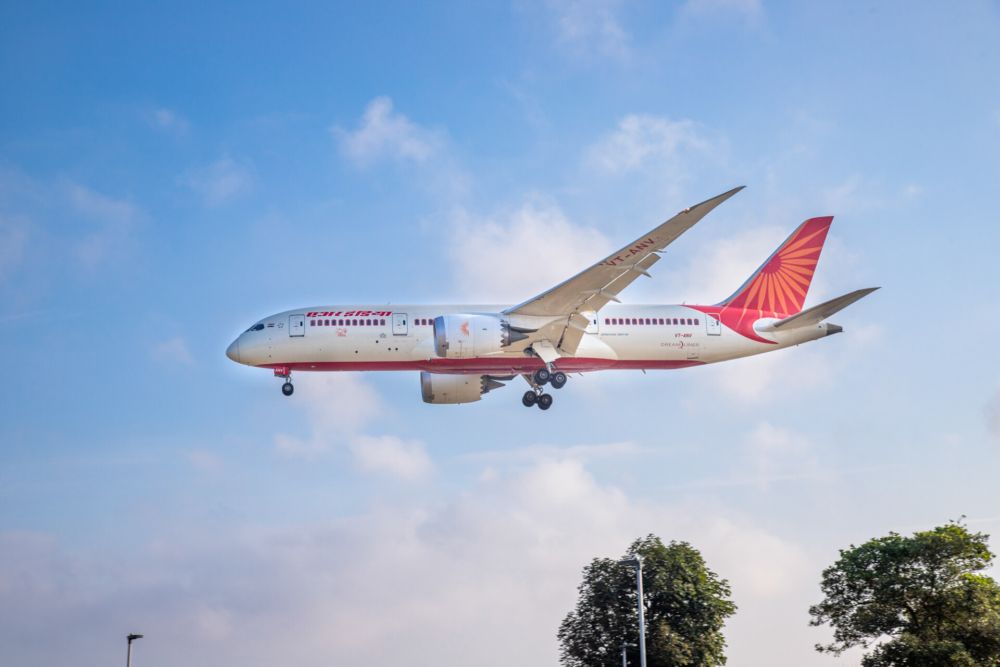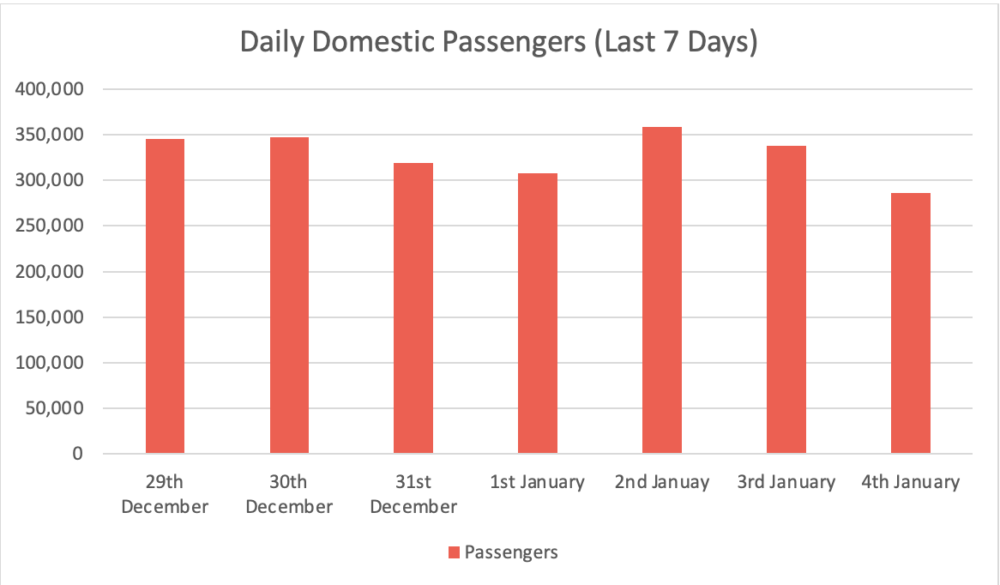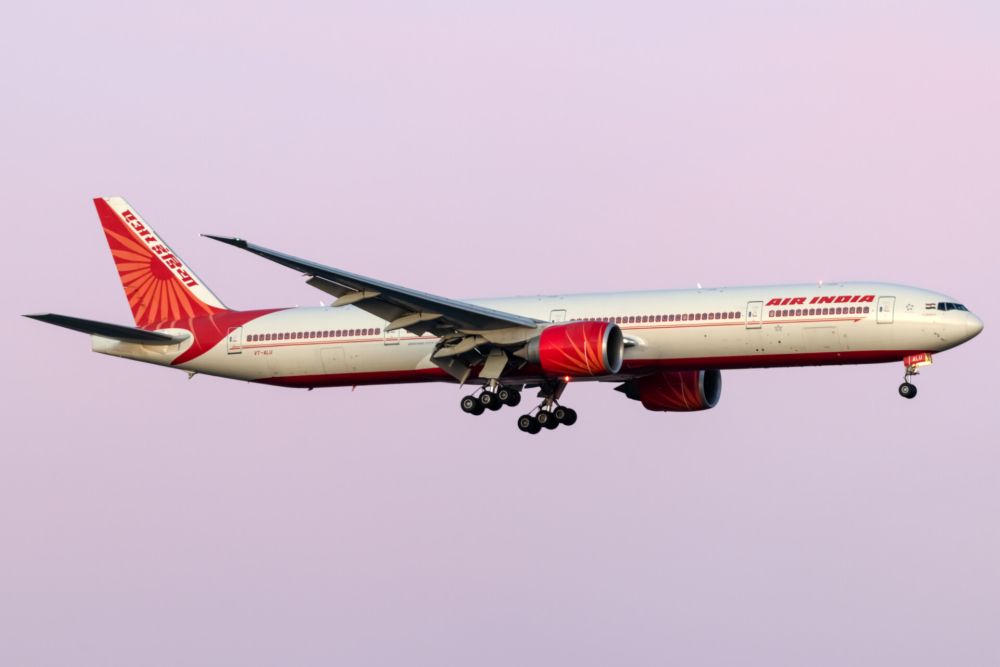As India enters its third wave of cases, all eyes are on the aviation industry and how it will be impacted. While the second wave in April-May set back the recovery significantly, airlines will be hoping that the third wave is less severe. Let's investigate the potential impact on traffic.
Coming down
As cases in India rise at a rapid pace, airline traffic is bound to fall in the coming days. State governments across the country have added new restrictions, ranging from curfews to the closure of public places. Given this, airlines are bracing for a big fall in daily passengers by next week itself.
However, fears over the Omicron variant didn't slow down passengers too much over the Christmas holidays, with passenger figures remaining over 300,000 every day. However, traffic fell below this mark on Tuesday, likely marking the beginning of a downward trend for carriers.
After the second wave left the national crippled, authorities are not taking any risks this time. Major leisure cities like Goa and major hubs like Delhi and Mumbai are all adding restrictions, keeping passengers away. Booking numbers have been sliding since mid-December and its impact is starting to show now.
Stay informed: Sign up for our daily and weekly aviation news digests.
Bad time for airlines
For airlines, the rise of Omicron comes at a time when capacity was just about to reach pre-pandemic levels. In the first week of 2021, airlines are averaging 2,777 daily domestic flights or over 96% of pre-pandemic numbers (January 2020), according to RadarBox.com. The falling passenger count will mean capacity will be scaled back in the coming weeks as well.
The first sign of this came when West Bengal restricted flights to three cities, including Kolkata, from Delhi and Mumbai. IndiGo was forced to cancel dozens of weekly flights, with other airlines following suit.
For now, it looks like Indian aviation's full recovery has been delayed by at least a few more months. While previous estimates suggested an early 2022 recovery, now, airlines will be waiting for the wave to pass before exceeding pre-pandemic levels for flights.
Best and worst-case
While it is impossible to predict anything in the COVID era, data from the US and EU and India's last wave may prove helpful. In the best-case scenario, the third wave is a sharp and short one, causing mild infections and not overwhelming the healthcare system. This will mean passenger traffic will be subdued for a few weeks, with traffic bouncing back by March.
The worst case would see airlines canceling thousands of flights over nearly two months. This would mean longer restrictions and higher cases, pushing airlines back to under six-figure daily numbers.
For now, the industry will be closely watching the impact of Omicron and if airlines can survive yet another downturn.
What do you think about the impact of the third wave on Indian aviation? Let us know in the comments!




